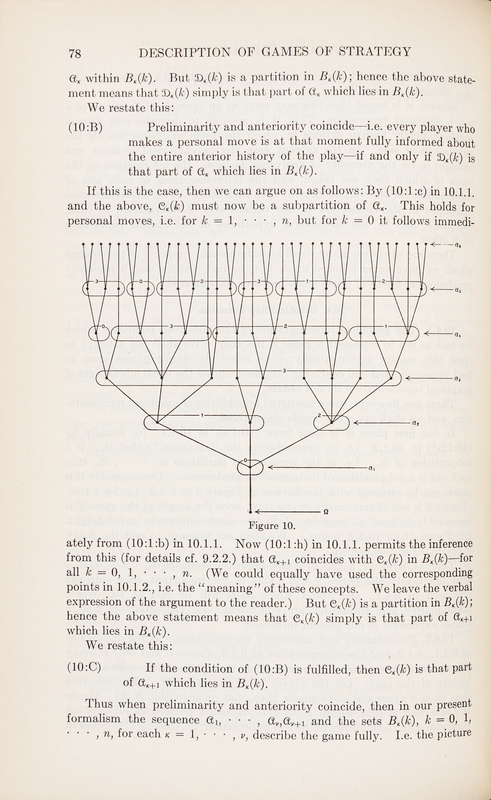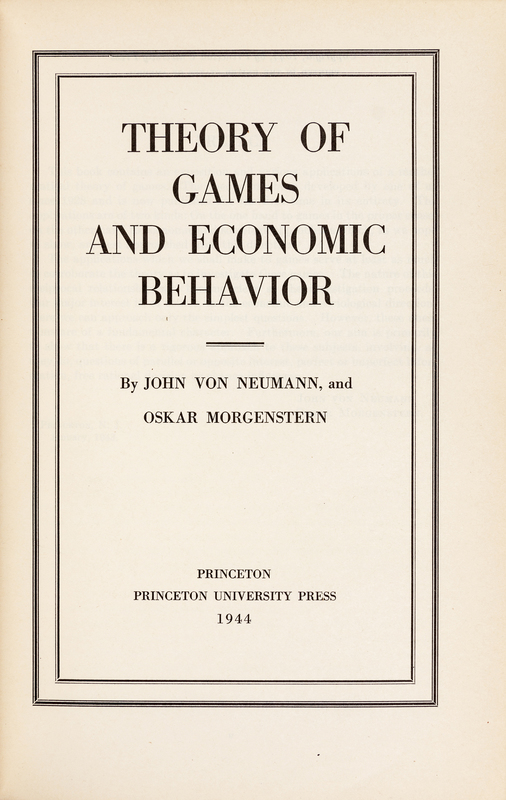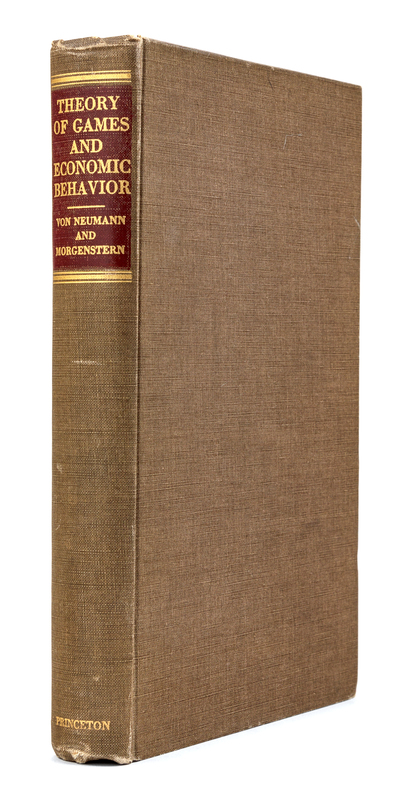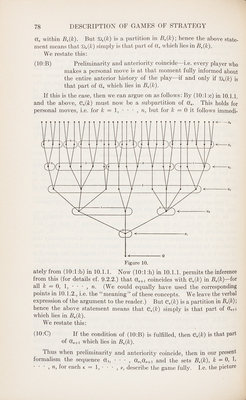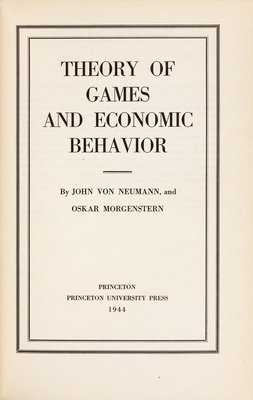VON NEUMANN, John (1903-1957) and Oskar MORGENSTERN (1902-1977). Theory of games and economic behavior. Princeton: Princeton University Press, 1944. FIRST EDITION.
Sale 714 - Library of a Midwestern Collector
Nov 5, 2019
10:00AM CT
Live / Chicago
Own a similar item?
Estimate
$1,000 -
1,500
Price Realized
$2,000
Sold prices are inclusive of Buyer’s Premium
Lot Description
VON NEUMANN, John (1903-1957) and Oskar MORGENSTERN (1902-1977). Theory of games and economic behavior. Princeton: Princeton University Press, 1944.
8vo. Errata sheet laid in loose. Original brown cloth (minor rubbing); quarter morocco folding case. Provenance: Northwestern University Applied Mathematics (stamp & pencil note on pastedown noting sale to); Wallace Givens, mathematician and a pioneer in computer science (stamp on pastedown).
FIRST EDITION OF THE GROUND-BREAKING WORK OUTLINING A MATHEMATICAL THEORY OF GAMES AND SOCIAL BEHAVIOR, with the rare errata sheet. Quantitative mathematical models for games such as poker or bridge at one time appeared impossible, since games like these involve free choices by the players at each move, and each move reacts to the moves of other players. However, in the 1920s John von Neumann single-handedly invented game theory, introducing the general mathematical concept of "strategy" in a paper on games of chance (Mathematische Annalen 100 [1928]: 295-320). This contained the proof of his "minimax" theorem that states "a strategy exists that guarantees, for each player, a maximum payoff assuming that the adversary acts so as to minimize that payoff." The "minimax" principle, a key component of the game-playing computer programs developed in the 1950s and 1960s by Samuel, Newell, Simon, and others was more fully articulated and explored in The Theory of Games and Economic Behavior, co-authored by von Neumann and the Austrian economist Oskar Morgenstern.
Game theory, which draws upon mathematical logic, set theory and functional analysis, attempts to describe in mathematical terms the decision-making strategies used in games and other competitive situations. The Von Neumann-Morgenstern theory assumes (1) that people's preferences will remain fixed throughout; (2) that they will have wide knowledge of all available options; (3) that they will be able to calculate their own best interests intelligently; and (4) that they will always act to maximize these interests. Attempts to apply the theory in real-world situations have been problematical, and the theory has been criticized by many, including AI pioneer Herbert Simon, as failing to model the actual decision-making process, which typically takes place in circumstances of relative ignorance where only a limited number of options can be explored.
Game theory, which draws upon mathematical logic, set theory and functional analysis, attempts to describe in mathematical terms the decision-making strategies used in games and other competitive situations. The Von Neumann-Morgenstern theory assumes (1) that people's preferences will remain fixed throughout; (2) that they will have wide knowledge of all available options; (3) that they will be able to calculate their own best interests intelligently; and (4) that they will always act to maximize these interests. Attempts to apply the theory in real-world situations have been problematical, and the theory has been criticized by many, including AI pioneer Herbert Simon, as failing to model the actual decision-making process, which typically takes place in circumstances of relative ignorance where only a limited number of options can be explored.
James Wallace Givens, Jr. (1910-1993) was a mathematician and a pioneer in computer science. He is the eponym of the well-known Givens rotations. He was an assistant to Veblen at the Institute for Advanced Study during his doctoral work, and later a professor at the University of Tennessee in Knoxville. He also taught at Wayne State University and Northwestern University, and worked early on with UNIVAC I at the Courant Institute of New York University (NYU) and later with ORACLE at Oak Ridge (both early vacuum tube computers). A FINE ASSOCIATION COPY.
Minsky 1963, 506; Origins of Cyberspace 953.
Condition Report
Auction Specialist
